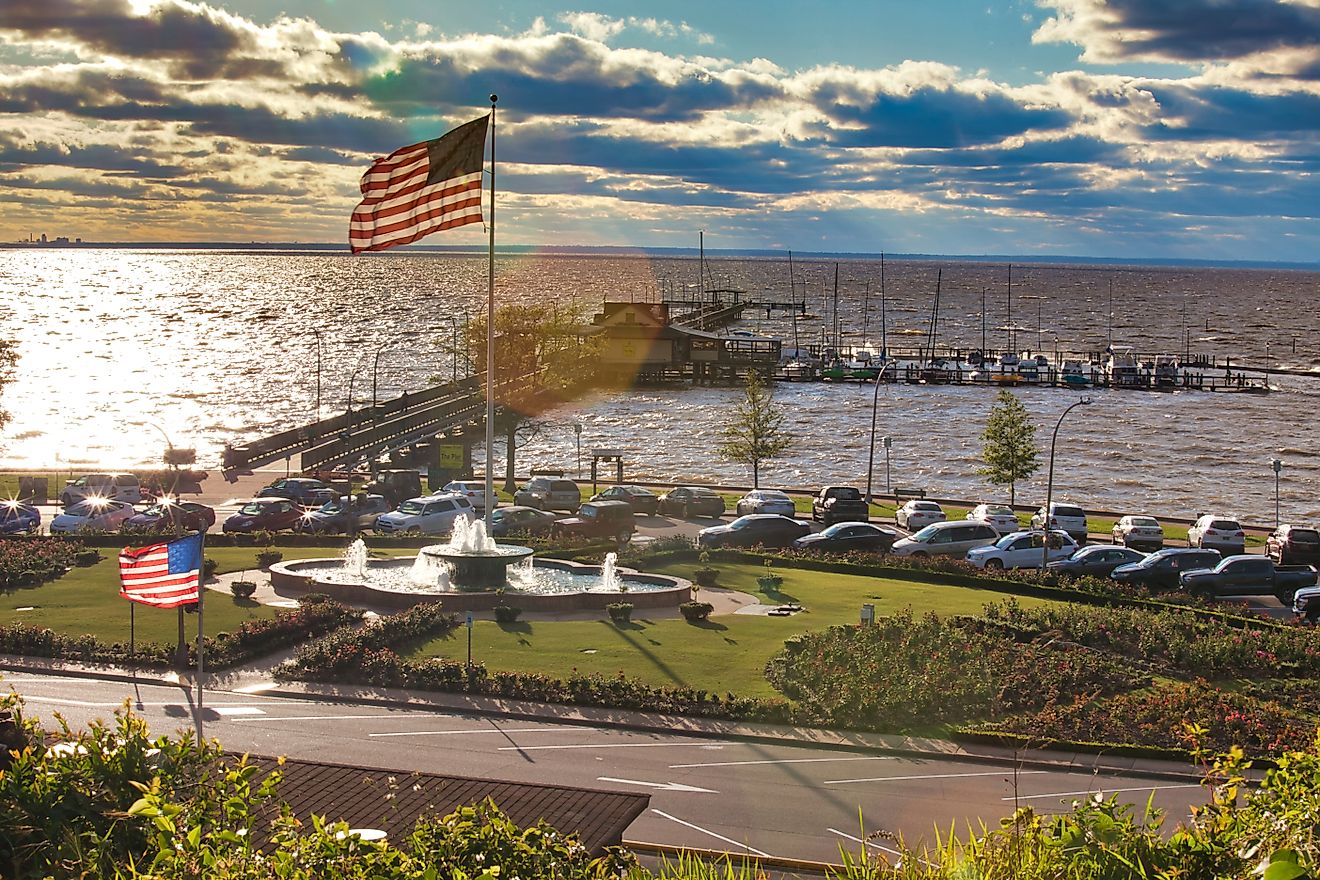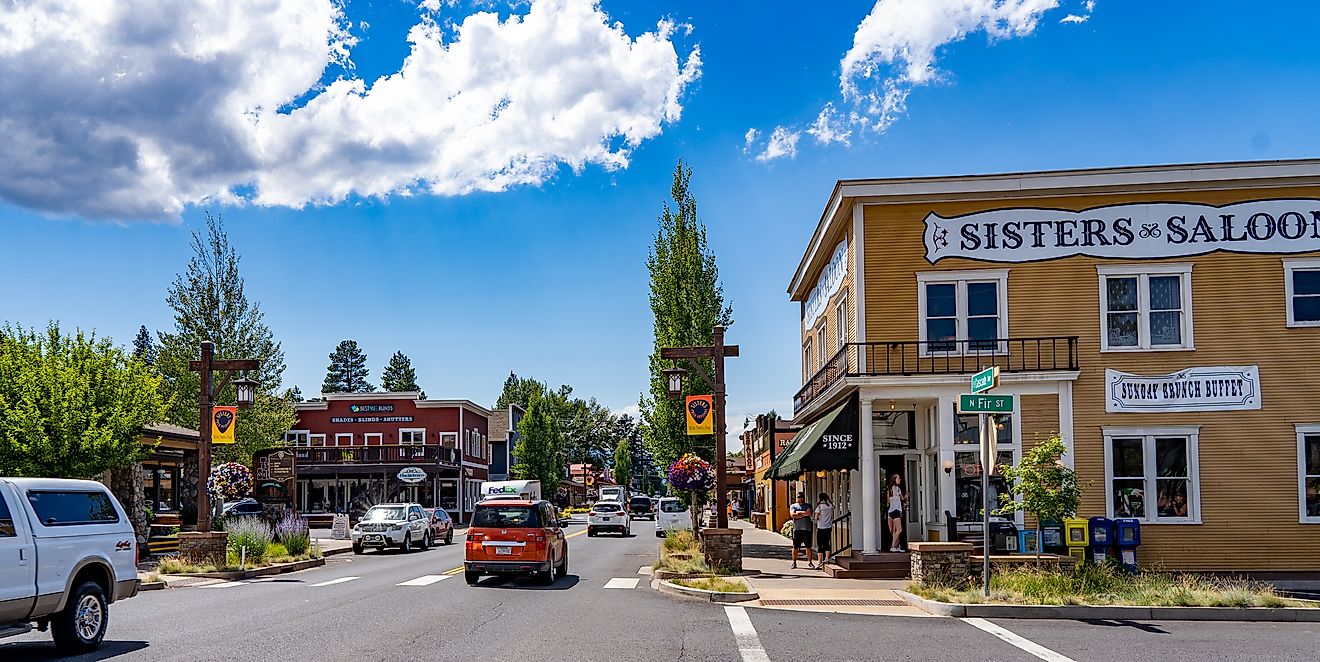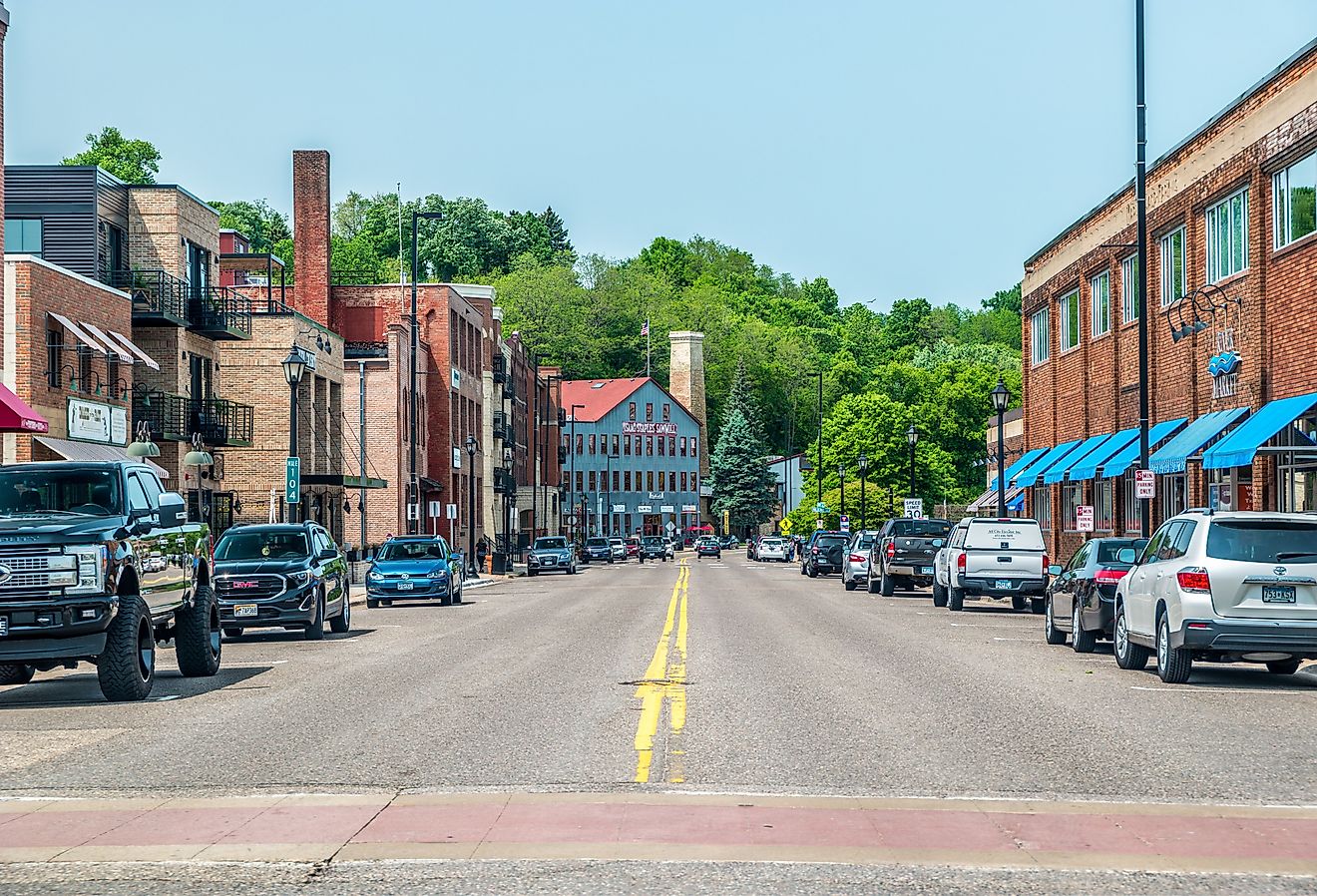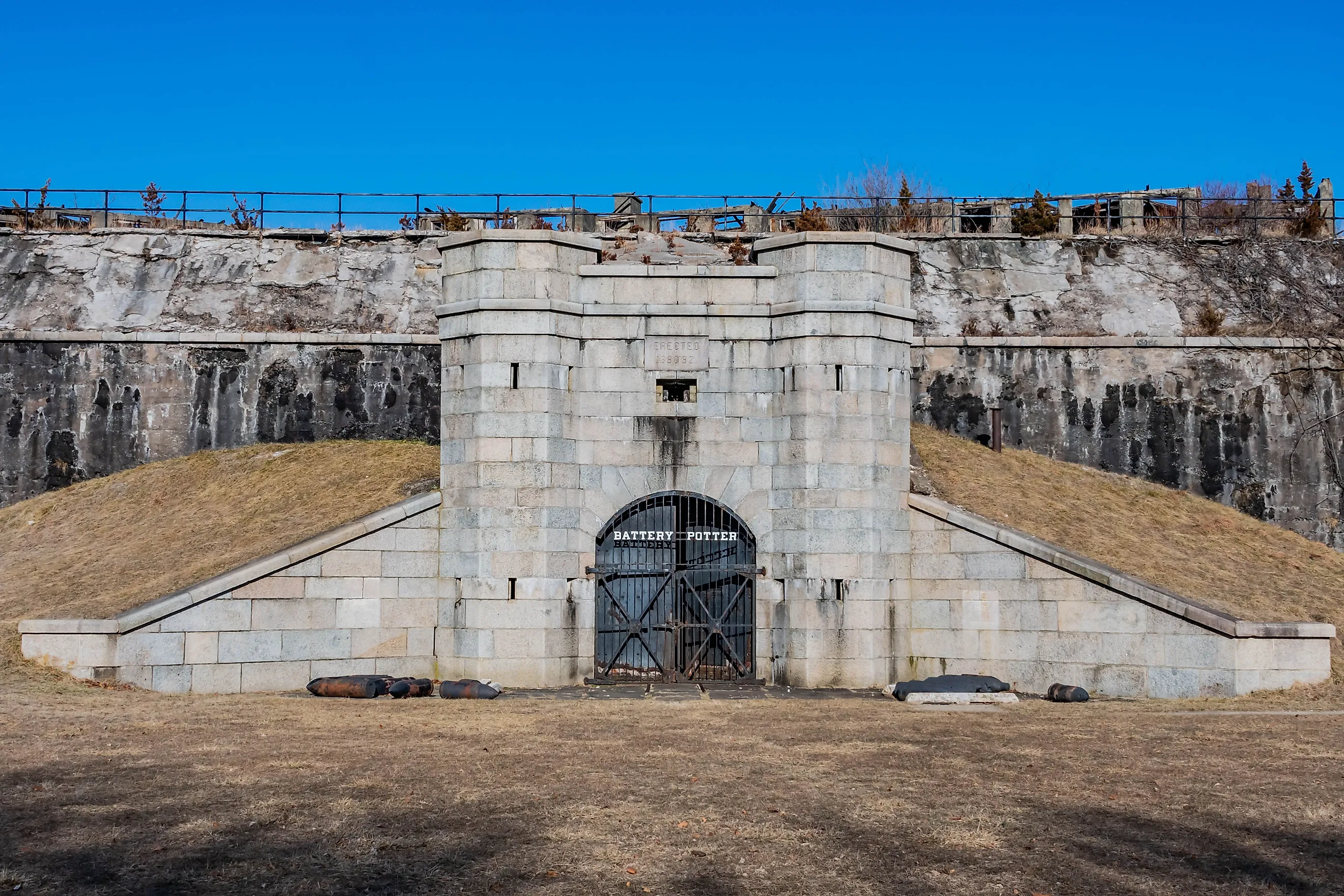
7 Must-See Historic Forts In New Jersey
There are fortifications of various shapes and sizes all across America, both old and new. As one of the original states in the Union, New Jersey is host to a plethora of these historic landmarks, ranging from coastal batteries to camps deep in the wilderness and even secret research facilities! Here are seven that you can visit today, all providing fun and educational roadside stops for any tour throughout the Garden State.
Fort Mott - Pennsville, New Jersey
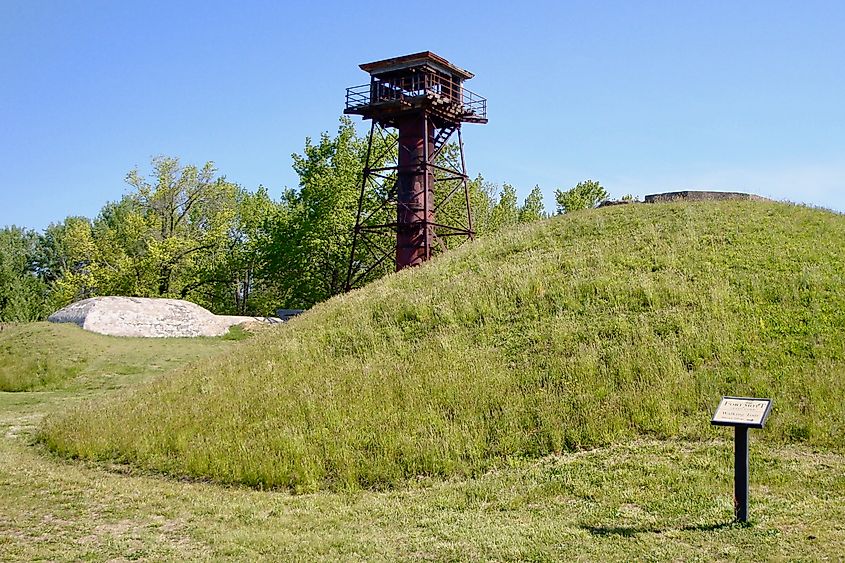
Fort Mott was constructed in the latter half of the 19th century as part of the U.S. Army’s coastal defense system following the Civil War. Positioned on the Delaware River across from Fort Delaware (located in... Delaware) and Fort DuPont, it was intended to protect the river approach to the economically and politically important city of Philadelphia.
Construction began in 1872 but stalled quite a bit over the decades, with the fort not reaching full operational capacity until the 1890s. It saw upgrades during the Spanish-American War and remained in use through World War I before being fully decommissioned in 1943.
Today, Fort Mott State Park preserves the remains of the fort’s gun batteries, bunkers, and fire control towers. You are able to walk the interpretive trail that outlines the original defense system, climb up to overlook platforms, and explore preserved military architecture for an up-close look.
A seasonal ferry connects to Fort Delaware across the water, creating a broader historical experience for true history buffs. The park also conveniently includes picnic areas, open fields, and top-notch views over the mouth of the Delaware River.
Fort Hancock - Sandy Hook, New Jersey
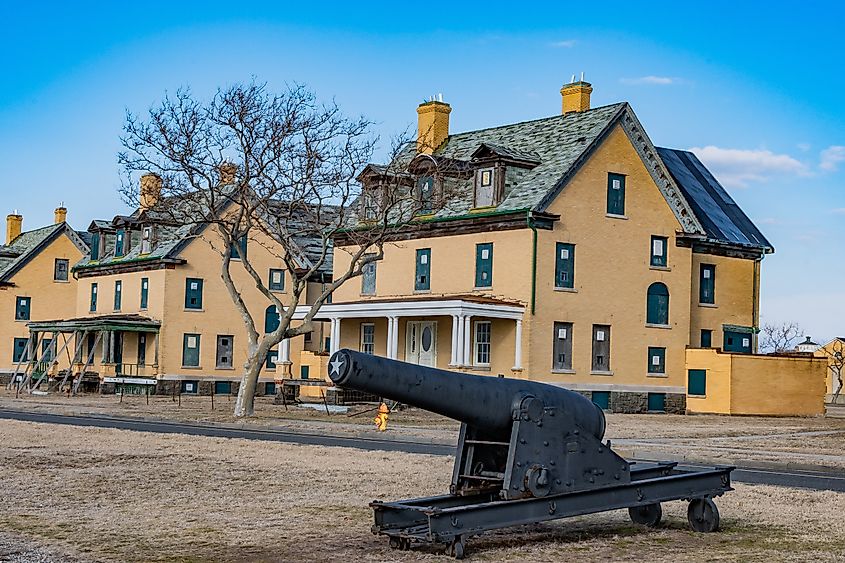
With ground first broken in 1859, Fort Hancock served as a key military installation guarding New York Harbor. It was built at the northern tip of the Sandy Hook peninsula in New Jersey, replacing aging Civil War-era defenses that had previously called it home. From then on, Fort Hancock became part of the Endicott system, featuring more contemporary, reinforced concrete gun batteries designed to counter the then-modern naval threats.
It remained active through both World Wars and later functioned as part of the U.S. Army’s air defense network during the Cold War. Decommissioned in late 1974, the fort is now part of the Gateway National Recreation Area. Here, tourists are free to explore Battery Potter, one of the first disappearing gun batteries in the country, and tour the Sandy Hook Lighthouse, the oldest operational lighthouse in the U.S. Moreover, several of the original officer homes line none other than "Officer’s Row," which is occasionally open for tours.
In addition to its military history, Fort Hancock offers access to beaches, walking trails, and birdwatching areas along the Atlantic coast.
Fort Lee Historic Park - Fort Lee, New Jersey
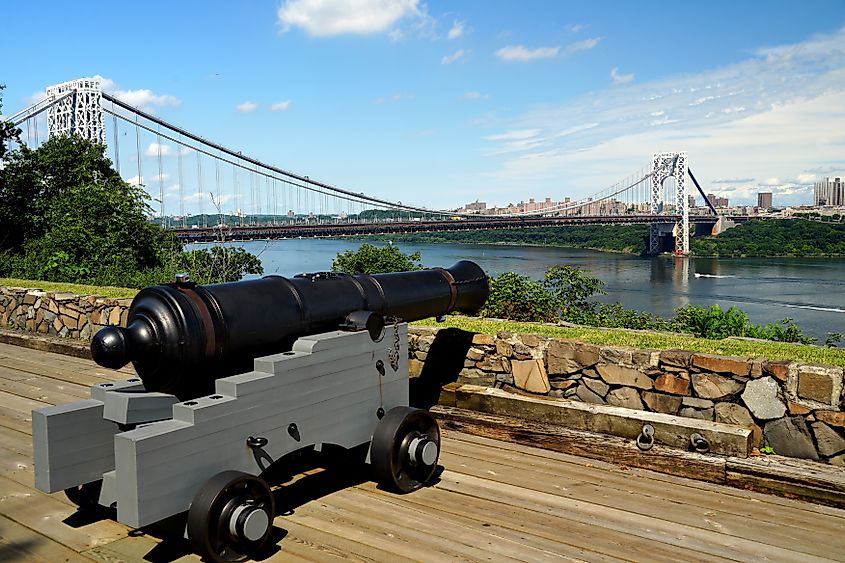
Fort Lee was established in 1776 on the Palisades cliffs overlooking the Hudson River. Alongside Fort Washington across the river in Manhattan, it was part of General George Washington’s early Revolutionary War strategy to block British naval movements. After the fall of Fort Washington in November 1776, Fort Lee was quickly abandoned, too, during the Continental Army’s retreat across New Jersey.
Though the original earthworks are no longer intact, the site remains historically significant as an important destination in the early American fight for independence. Today, Fort Lee Historic Park features a reconstructed Revolutionary War encampment with replica blockhouses, gun batteries, and other kinds of cool exhibits. If you want to learn even more, be sure to stop by the well-curated visitor center, which includes detailed displays on the fort’s vital role in the New York campaign.
Located just south of the George Washington Bridge, the park provides sweeping views of the Hudson River and Manhattan skyline. It connects to the Long Path hiking trail along the Palisades, making it an excellent little escape into nature from big city life as well.
Fort Nonsense - Morristown, New Jersey
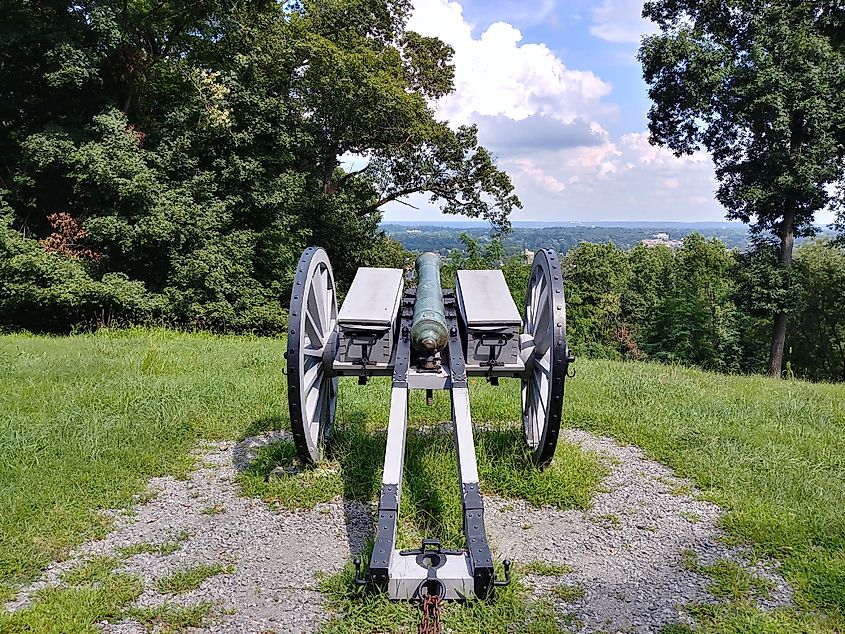
This uniquely named fort sits atop a hill overlooking Morristown and is another location constructed during the Revolutionary War under General George Washington’s orders, this time in 1777. The purpose of the site remained mixed, with some suggesting it was meant for signal fires or as a lookout post, while others believe it more or less served primarily to keep troops occupied during lulls in fighting.
Regardless, the hill provided a strategic vantage point and no doubt functioned as part of the area's larger defensive network. No battles occurred here, though, and any original fortifications have long since disappeared. These days, the site is part of the larger Morristown National Historical Park, the first designated national historical park in the United States, in fact.
Informative signage detailing Fort Nonsense's history, the foundations of Revolutionary-era structures, and gorgeous, wide-ranging views of the surrounding landscape make this destination a fun spot for anyone exploring New Jersey's interior. Furthermore, a network of local trails links Fort Nonsense to Morristown’s other key historical sites, including Washington’s Headquarters at the Ford Mansion and the winter encampment area at Jockey Hollow.
Fort Monmouth - Oceanport, New Jersey

Fort Monmouth is a relatively newer entry on this list. It was established in 1917 as a training and research facility for the U.S. Army Signal Corps. Originally named Camp Little Silver, it was renamed to honor fallen revolutionary soldiers at the Battle of Monmouth. It quickly became a main center for military communications development.
Over time, it played a central role in advancing radar, satellite, and electronics research, with the fort remaining active through both World Wars, the Cold War, and into the early 21st century before closing in 2011 as part of a nationwide base realignment. Although not a true battlefield fort, again, its contributions to military technology were substantial and can't be overlooked by historians.
Parts of the decommissioned base are now being repurposed for public and private use, including spaces for film production (Netflix is currently developing a massive new studio on the grounds). Moreover, the InfoAge Science and History Museums occupy former Signal Corps buildings close by and boast exhibits on subjects like telecommunications, advanced military tech, and computing. You can tour around displays featuring Cold War equipment, early radar systems, and space communications artifacts on some of the original grounds where they were developed!
Fort Mercer - National Park, New Jersey
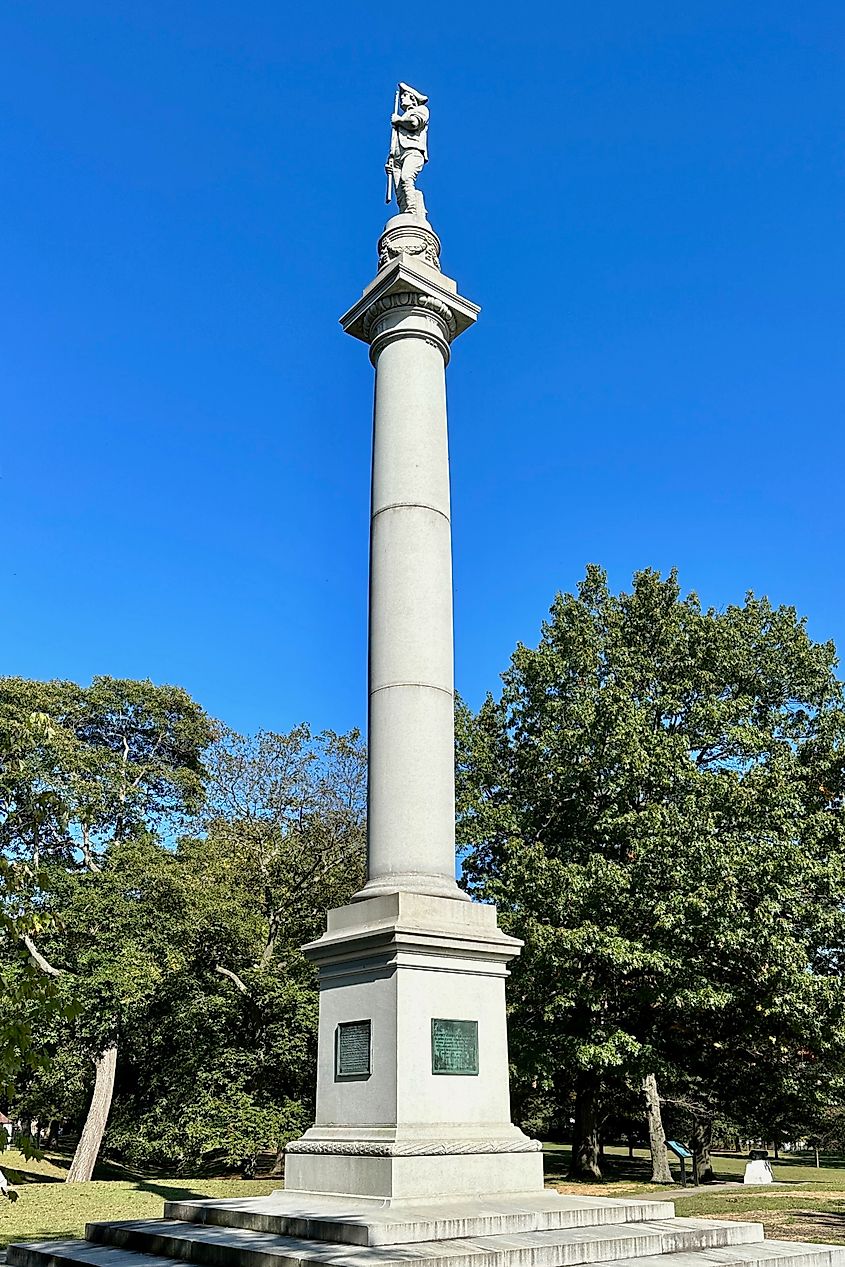
Fort Mercer was constructed in 1777 on the banks of the Delaware River to prevent British naval access to Philadelphia. Alongside Fort Mifflin on the Pennsylvania side of the water, it formed part of a defensive chain supported by underwater obstacles known as chevaux-de-frise.
This iconic fort is best known for the Battle of Red Bank, where a small force of Continental soldiers successfully repelled a much larger loyal Hessian assault on October 22, 1777. The victory delayed British supply lines and stands as a significant moment in New Jersey’s Revolutionary War history (although the fort was eventually taken a month later).
Later abandoned and dismantled permanently, portions of the original earthworks remain to this day. The site is now preserved within Red Bank Battlefield Park, which includes reconstructed fortifications, the towering Red Bank Battle Monument, interpretive signage, and the Whitall House, an original 1748 home used as a field hospital during the battle.
Fort Billingsport - Paulsboro, New Jersey

Fort Billingsport holds the distinction of being the first land purchase ever made by the United States government. It was acquired in July 1776 to construct a fortification to watch over the Delaware River. Famed Polish military engineer Tadeusz Kościuszko contributed to the original design, and construction began under Continental Army supervision later that year. Located just south of Philadelphia, it was yet another structure focused on blocking British naval access deeper inland, supported by artillery placed within the fort.
Though never fully completed, the fort was manned and operational by the fall of 1777. As British forces eventually did advance toward Philadelphia, the garrison at Fort Billingsport withdrew in the face of overwhelming opposition, not before disabling their cannons and setting fire to the post. British troops then briefly occupied the fort site before abandoning it, and it remained intermittently used by American forces through 1781 after being retaken.
Fort Billingsport is now merely a small public park on the river banks. While no original structures survive, the site does include historical markers, as well as lots of open green space and access to the water.
Learn About New Jersey's History at These Military Landmarks
New Jersey’s numerous historic forts offer an interactive window into the state’s longstanding military legacy, from Revolutionary War strongholds to Cold War-era installations and beyond. Though the ones mentioned above are all pretty much no longer serving their original purposes, each site now preserves a piece of national defense history still worth exploring today. So, the next time you're travelling around the Garden State, be sure to consider one or two of these spots for a fun and educational trip.
